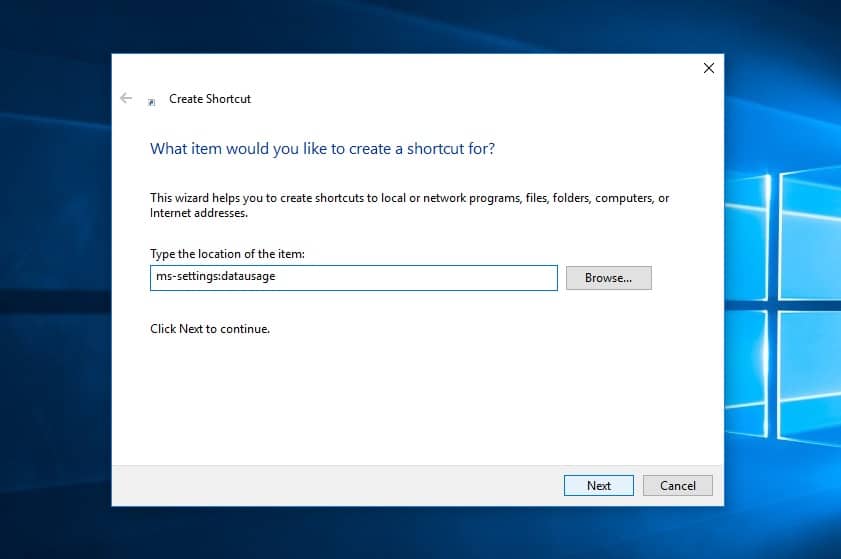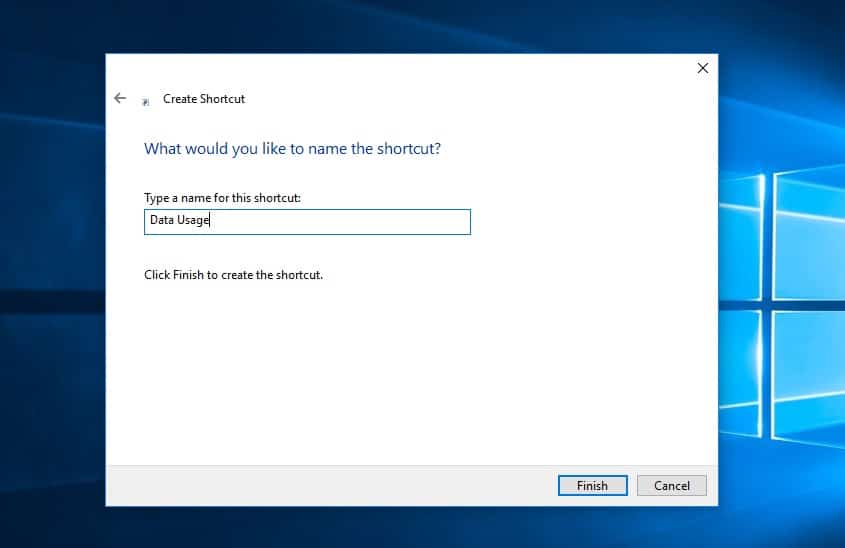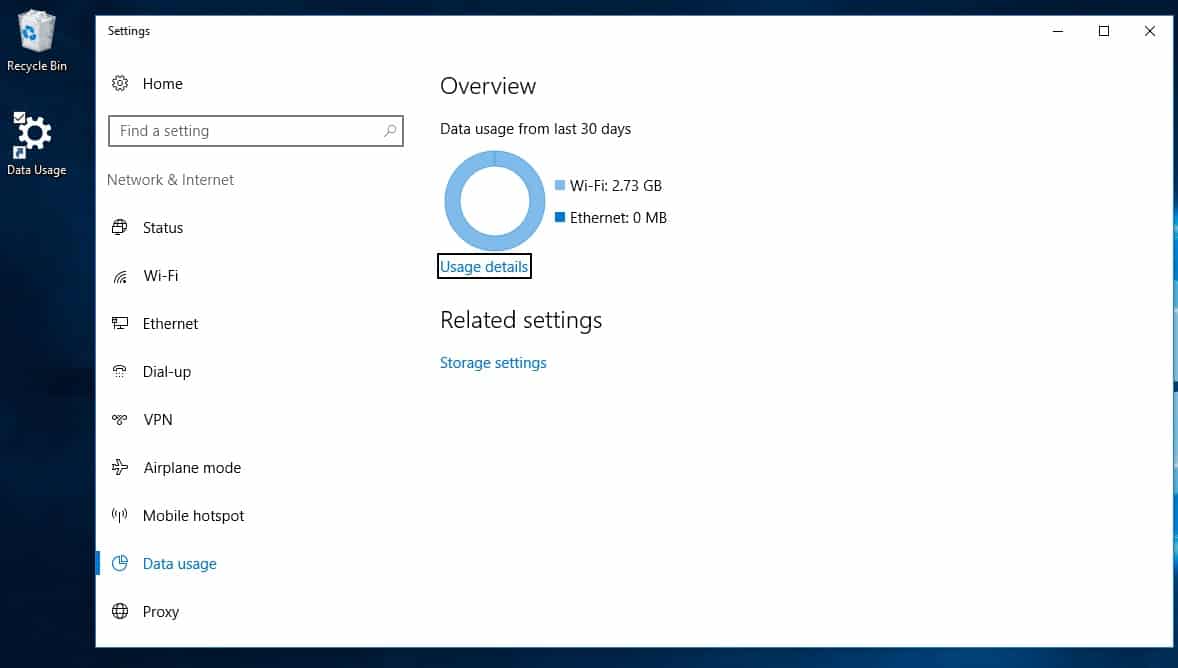As Windows 10 evolves you can notice more and more aspects of the system are transformed. The most popular desktop OS is slowly moving ahead of the traditional design to a more modern look. As a result, Microsoft has moved huge chunks of the old Control Panel to the new, modern Settings app. You may like it or not but you can’t disagree that navigating to specific destinations in the new app is just as tedious if not more. The Windows 10 settings app is at least not as confusing as the control panel. Thanks to a simple extension by Lucas (@Whistler4Ever), you can create one-click desktop shortcuts for the most popular settings pages.
You might prefer having the Windows 10 settings you use frequently as desktop shortcuts. This can be done using URI. A URI or Uniform Resource Identifier is a string of characters used to identify the name of a resource. So if you know the URI for each setting, you can create its desktop shortcut. Or you can edit the Windows Registry and add it to the context menu.
These usually begin with ms-settings, followed by a colon and the page you want to jump to. For instance, ms-settings: takes you straight to the main page on the Settings app. Similarly, ms-settings:batterysaver-settings will take you to the battery-saver settings page as you expect. Navigate to Settings > System > Battery and do the following.
Create desktop shortcuts for various settings
- Right-click or tap and hold any blank place on the Windows 10 Desktop.
- Choose New > Shortcut.

- Enter a valid ms-settings command below and type it into the input box. For example, to go to the Data Usage app, type
ms-settings:datausagein the box marked Type the location of the item.
- Click Next, give the shortcut a name, and click Finish. It would be a good idea to give it a descriptive name so you know what the shortcut is for.

- Double-clicking that shortcut takes you to the page immediately, with no intermediate steps.

Valid URIs for various Windows 10 settings
MSDN has listed the URIs that target specific settings apps in Windows 10. This table lists the URIs you can use to display built-in settings pages in Windows 10.
| Settings page | App used for the shortcut |
| Accessibility | |
| Closed captioning | ms-settings:easeofaccess-closedcaptioning |
| High contrast | ms-settings:easeofaccess-highcontrast |
| Keyboard | ms-settings:easeofaccess-keyboard |
| Magnifier | ms-settings:easeofaccess-magnifier |
| Mouse | ms-settings:easeofaccess-mouse |
| Narrator | ms-settings:easeofaccess-narrator |
| Other options | ms-settings:easeofaccess-otheroptions |
| Battery and power | |
| Battery Saver | ms-settings:batterysaver |
| Battery Saver settings | ms-settings:batterysaver-settings |
| Battery use | ms-settings:batterysaver-usagedetails |
| Power and sleep | ms-settings:powersleep |
| Display and user interface | |
| Backgrounds | ms-settings:personalization-background |
| Colors (display) | ms-settings:colors |
| Colors (personaliation) | ms-settings:personalization-colors |
| Date and time | ms-settings:dateandtime |
| Display | ms-settings:display |
| Mouse and touchpad | ms-settings:mousetouchpad |
| Personalization | ms-settings:personalization |
| Region and language | ms-settings:regionlanguage |
| Screen rotation | ms-settings:screenrotation |
| Speech | ms-settings:speech |
| Start | ms-settings:personalization-start |
| Themes | ms-settings:themes |
| Typing | ms-settings:typing |
| Network and radios | |
| Airplane mode | ms-settings:network-airplanemode |
| Bluetooth | ms-settings:bluetooth |
| Cellular | ms-settings:network-cellular |
| Data usage | ms-settings:datausage |
| Dialup | ms-settings:network-dialup |
| DirectAccess | ms-settings:network-directaccess |
| Ethernet | ms-settings:network-ethernet |
| Manage Wi-Fi | ms-settings:network-wifisettings |
| Mobile hotspot | ms-settings:network-mobilehotspot |
| Proxy | ms-settings:network-proxy |
| Wi-Fi | ms-settings:network-wifi |
| VPN | ms-settings:network-vpn |
| Other | |
| For developers | ms-settings:developers |
| Offline maps | ms-settings:maps |
| Optional features | ms-settings:optionalfeatures |
| Privacy | |
| Account info | ms-settings:privacy-accountinfo |
| Calendar | ms-settings:privacy-calendar |
| Camera | ms-settings:privacy-webcam |
| Contacts | ms-settings:privacy-contacts |
| Feedback | ms-settings:privacy-feedback |
| Location | ms-settings:privacy-location |
| Messaging | ms-settings:privacy-messaging |
| Microphone | ms-settings:privacy-microphone |
| Motion | ms-settings:privacy-motion |
| Other devices (privacy) | ms-settings:privacy-customdevices |
| Privacy | ms-settings:privacy |
| Radios | ms-settings:privacy-radios |
| Speech, inking, and typing | ms-settings:privacy-speechtyping |
| System and user | |
| Connected devices | ms-settings:connecteddevices |
| Family and other users | ms-settings:otherusers |
| Lockscreen | ms-settings:lockscreen |
| Notifications and actions | ms-settings:notifications |
| Proximity | ms-settings:proximity |
| Signin options | ms-settings:signinoptions |
| Storage Sense | ms-settings:storagesense |
| Tablet mode | ms-settings://tabletmode/ |
| Windows Update | ms-settings:windowsupdate |
| Work access | ms-settings:workplace |
Read Next: How to Edit Win+X Menu on Windows 10